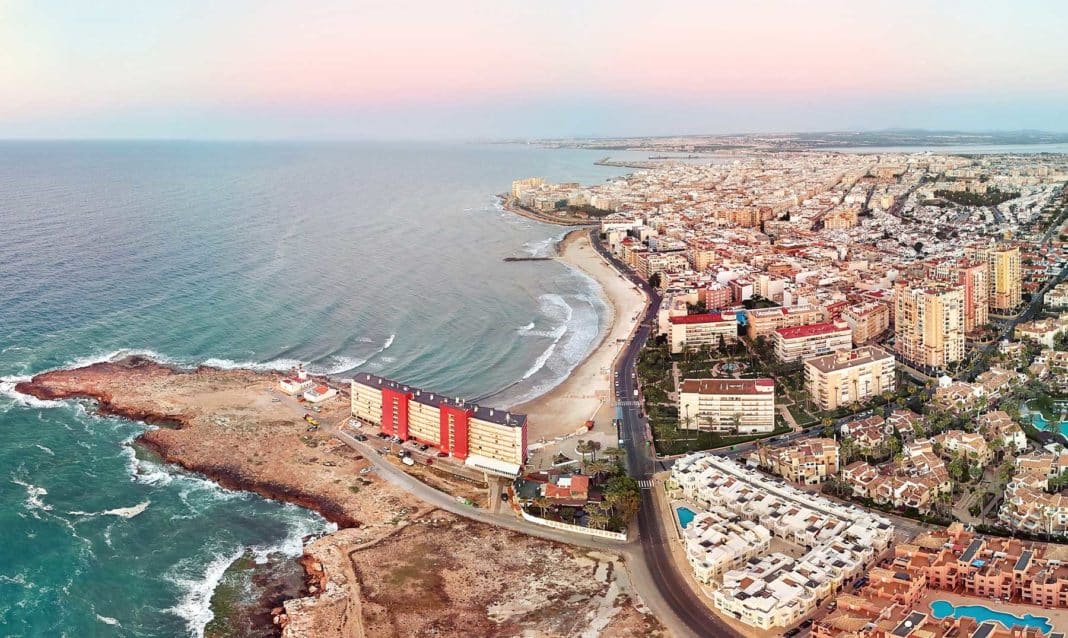If the province of Alicante occupies one of the last positions in GDP per capita in the country, it is not by chance. This is the consequence of the fact that most of its municipalities have an income level that is well below that of Spain as a whole. In fact, of the 23 towns in the area with over 20,000 residents, only one, Sant Joan d’Alacant, exceeds the average level of income per inhabitant found in Spain as a whole, while most of the remainder flounder at the bottom of the table.
WHY IS THE PER CAPITA INCOME IN ALICANTE SO LOW?
This is reflected in the report prepared annually by the INE, which once again places the municipalities of Juan XXIII and Virgen del Remedio in Alicante among the poorest of all large Spanish cities.
According to INE data, this year Torrevieja replaced Almoradí as the town with the lowest level of net income per inhabitant, at just 8,417 euros, 3,852 euros less than the national average, which stood at 12,269 euros during the same period. In fact, Torrevieja is the ninth poorest town in the whole of Spain of those with more than 20,000 inhabitants or the second, only behind San Lúcar de Barrameda (Cádiz), of those with city status.
Almoradí moved from last to penultimate place in income per inhabitant within the province, with 8,479 euros; followed by Crevillent, with 8,839 euros; Calp, with 8,995; and l’Alfàs del Pi, with 9,246.
Other municipalities that are also below 10,000 euros of income per inhabitant include Aspe, with 9,393 euros; Pilar de la Horadada (9,406 euros); Elda (9,452); Petrer (9,660); Elche (9,839) and Benidorm with 9,891. The situation in the tourist capital of Marina Baixa is typical of what happened this year with the pandemic, since it’s average income fell by more than 560 euros due to the stoppage of tourist activity caused by coronavirus.
Paloma Taltavull, who is professor of Applied Economics at the University of Alicante says that a good part of the population of these coastal municipalities is made up of temporary residents, whose income is not included in the study, while permanent residents are usually workers in low paid jobs in the tourism sector or in agriculture. These are activities with a fairly low salary level, which explains these results.
Meanwhile, the richest populations in the province are located around the metropolitan area of Alicante, where the most advanced services and the civil services are concentrated. Even so, only Sant Joan manages to exceed the national average income, with 12,318 euros. Just below that average is El Campello, with 11,973 euros; the city of Alicante, with 11,676; and Mutxamel, with 11,634.
Other cities with the highest income levels in the province include Ibi, with 11,589 euros; and Alcoy, with 11,495, thanks to the presence of an industrial sector that pays better wages.
At the national level, Níjar is the municipality with the lowest net income in the entire country, with 7,801 euros, while Pozuelo de Alarcón once again heads the list of the richest towns, more than triple that amount, at 26,009 euros.
OTHER INDICATORS
Beyond the economic indicators, Torrevieja also stands out as the tenth Spanish city with the lowest life expectancy at just 81.1 years compared to 85.4 in Majadahonda, the city with the longest-lived residents. The municipality of Vega Baja is also the region with the highest percentage of foreign resident population, with 40.7% of the total census. A classification in which Benidorm appears third, with 29.6%.





